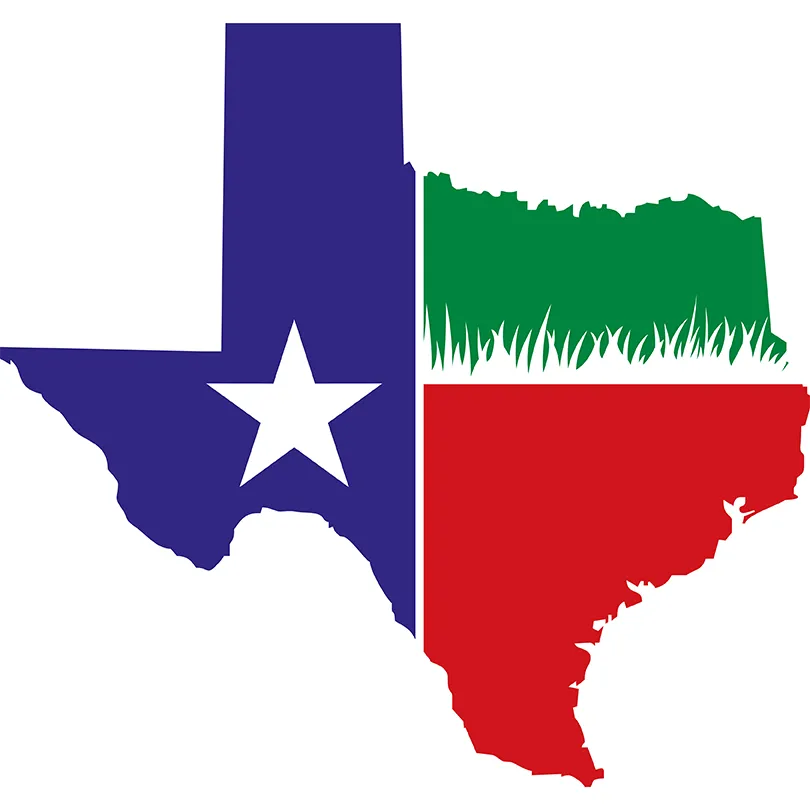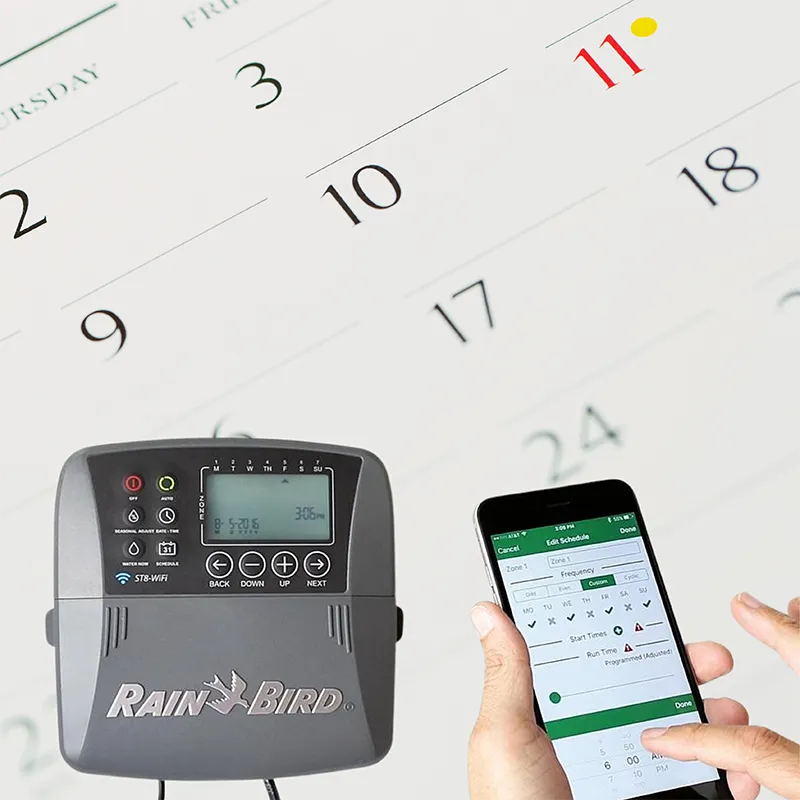
In the state of Texas, lawn sprinkler systems can provide necessary water to keep your lawn looking lush and green during the hot summer months. However, with the unpredictable weather patterns that come with spring, it can be difficult to know when to start running your sprinkler system and when to turn it off. To help you keep your lawn looking its best, here are some tips and best practices for Texas spring sprinkler scheduling to help you know when to turn it on and off. With the right scheduling, you can ensure that your lawn stays healthy and vibrant while also conserving water and avoiding any unnecessary waste.

Start watering as soon as possible. Depending on the type of plants you have and the weather in your area, you may want to start watering as soon as possible to help get your lawn and flowerbeds off to a healthy start. If you’re unsure about the best watering times and days for your particular plants, visiting your local garden center can help you determine the best times to water. Take note of any changes in weather patterns. Depending on your area and the time of year, you may experience changes in weather patterns that may require you to adjust when you turn on and off your sprinkler system. Avoid watering during the hottest parts of the day. During the hottest parts of the day, your plants won’t be able to absorb much water. Instead, watering during the cooler parts of the day, such as early in the morning or late in the evening, can help your plants absorb more water.
Use mulch to protect your plants. Mulch can help keep your soil cooler, helping your plants survive the hotter parts of the day. Additionally, mulch can help prevent water from evaporating and help your plants retain more water.
Avoid running your sprinkler system during droughts. Depending on the weather in your area, you may experience a drought at some point during the spring. While you may need to water your lawn and garden occasionally, it’s important to avoid running your sprinkler system during droughts, as doing so may worsen the situation.
Repair, clean, and maintain your sprinkler system. Sprinkler systems need to be maintained regularly to help them run properly. Whether you have an outdoor sprinkler system or a drip irrigation system, you’ll want to keep an eye on it and make repairs if needed.
What is sprinkler scheduling? Sprinkler scheduling refers to the specific times and days you run your lawn sprinkler system. By scheduling when to turn on and off your sprinkler system, you can help promote healthier lawns and gardens, use less water, and save money. Whether you have an outdoor sprinkler system or a drip irrigation system, you can use sprinkler scheduling to determine the best times to run your system and achieve the desired results. Sprinkler scheduling can help you achieve the best lawn and garden health by adjusting the times and days you water. Depending on the type of plants you have, they may need more or less water. Some plants, like newly planted trees and shrubs, may need to be watered daily during the spring as they become established. Other plants, like perennials and annuals, may only need a small amount of water once a week. By scheduling your sprinkler system, you can ensure that your plants and lawn get exactly what they need while reducing the amount of water you use.

Benefits of sprinkler scheduling: There are several benefits you can expect by scheduling your sprinkler system to help keep your lawn and garden healthy. Some of these benefits include reducing water waste, conserving water, and promoting healthier soil and plants.
Reduce water waste. When you water your lawn and gardens, some water may run off and go to waste. Some of this water may end up getting absorbed into the ground, and some may run-off into nearby bodies of water. By scheduling when and how you water, you can reduce the amount of water that goes to waste.
Conserve water. Lawns, especially newly planted ones, may need a lot of water to stay healthy, vibrant, and green. By scheduling your sprinkler system, you can better control how much water plants get, helping you conserve water while maintaining a healthy lawn.
Promote healthier soil. Healthy soil is necessary for healthy plants. By watering plants at the right times, you help promote healthy soil that can help keep plants healthy, vibrant, and able to fight off diseases.
Promote healthier plants. If you water your plants at the right times, they can stay healthy and vibrant, helping them grow better, last longer, and look better.
How to determine when to turn on and off your sprinkler system: There are a few factors to consider when determining when to turn on and off your sprinkler system, including your specific weather patterns, the type of plants you have, and the type of sprinkler system you use. There are a few steps you can take to help you determine the best times to start and stop your sprinkler system.
Observe the weather. Depending on how long your growing season lasts, you may want to start watering earlier or later in the spring. To help determine when to start watering, keep an eye on the weather patterns in your area, keeping an eye out for the first signs of spring, such as warmer temperatures and increased rainfall.
Consider the type of plants you have. Different plants have different watering requirements, so you may need to adjust the way you turn on and off your sprinkler system based on the type of plants you have. For example, some perennials, annuals, and shrubs may only need a small amount of water once a week while other plants, like newly planted trees, may need daily watering.
Consider the type of sprinkler system you use. Depending on the type of sprinkler system you use, you may need to adjust the way you turn it on and off. For example, some types of sprinkler systems run for a set amount of time, such as one hour per cycle.
Common mistakes to avoid when scheduling a sprinkler system: There are a few common mistakes you’ll want to avoid when scheduling your sprinkler system to help promote healthier lawns and gardens. Some of these mistakes include watering too often, watering too long, and not understanding the soil type.
Watering too often. Depending on the type of plants you have, you may need to water them more or less than others. While you may want to help promote healthier plants and lawns, watering them too often can water them away.
Watering too long. While you may need to run your sprinkler system for a certain amount of time to get your lawn fully watered, watering it too long can cause damage and waste-water.
Not understanding the type of soil you have. Knowing the type of soil in your yard can help you avoid mistakes when watering, such as watering too long or not long enough. Different types of soil may require different watering times and amounts, so understanding your soil type can help you water your plants better.
How to adjust your sprinkler system for changing weather patterns: Depending on the weather in your area, you may experience changes in weather patterns that may require you to adjust your sprinkler system. Some ways you can adjust your sprinkler system for changing weather patterns include adjusting the watering times, changing the watering pattern, and adjusting the watering amount. There are also a few things you can do to help prepare your lawn and garden for changes in weather patterns. These include keeping an eye on your plants, watching the weather, and reading up on gardening tips and tricks.
Keep an eye on your plants. Keeping an eye on your plants can help you notice when they need more or less water. If you notice that your plants are struggling, you may need to increase or decrease your watering times.
Watch the weather. Depending on your area, you may experience seasonal weather changes that can affect the amount of water your plants need. By keeping an eye on the weather, you can better prepare your plants for changes in weather patterns.

